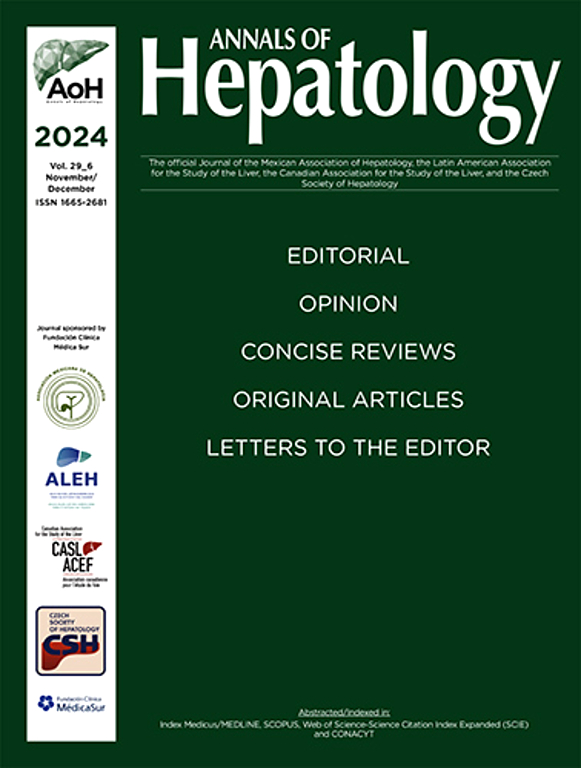An exploratory machine learning model for predicting advanced liver fibrosis in autoimmune hepatitis patients: A preliminary study
IF 3.7
3区 医学
Q2 GASTROENTEROLOGY & HEPATOLOGY
引用次数: 0
Abstract
Introduction and Objectives
Advanced fibrosis is a crucial stage in the progression of autoimmune hepatitis (AIH), where fibrosis can either regress or advance. This study aims to leverage machine learning (ML) models for the assessment of advanced liver fibrosis in AIH patients using routine clinical features.
Patients and Methods
A total of 233 patients diagnosed with AIH and underwent liver biopsy were included in the discovery cohort. The dataset was randomly split into training and testing sets. Patients were categorized into groups with no/minimal/moderate fibrosis and advanced fibrosis. Six ML models were employed to identify the optimal model. Subsequently, the predictive capability of the best ML model was validated in an additional cohort (n = 33) and compared with conventional noninvasive fibrosis scores.
Results
Three key clinical features, including prothrombin time (PT), albumin (ALB), and ultrasound spleen thickness (UTST), were analyzed by least absolute shrinkage and selection operator (LASSO) regression. In the training set, the random forest (RF) model showed the highest diagnostic performance in predicting advanced fibrosis stage (AUC=0.951). In the testing cohort and validation cohort, the RF model maintained high accuracy (AUC = 0.863 and AUC = 0.843). Additionally, the random forest model outperformed the conventional noninvasive fibrosis scores.
Conclusions
ML models, particularly the RF model, can help improve the discrimination of advanced liver fibrosis in patients with AIH.
预测自身免疫性肝炎患者晚期肝纤维化的探索性机器学习模型:初步研究
简介和目的:晚期纤维化是自身免疫性肝炎(AIH)进展的关键阶段,在此阶段纤维化可退可进。本研究旨在利用机器学习(ML)模型,利用常规临床特征评估AIH患者的晚期肝纤维化。患者和方法:共有233名确诊为AIH并接受肝活检的患者被纳入发现队列。数据集随机分为训练集和测试集。患者分为无/轻度/中度纤维化组和晚期纤维化组。采用6个ML模型来确定最优模型。随后,在另一个队列中验证了最佳ML模型的预测能力(n = 33),并与传统的非侵入性纤维化评分进行了比较。结果:采用最小绝对收缩和选择算子(LASSO)回归分析凝血酶原时间(PT)、白蛋白(ALB)和超声脾厚度(UTST) 3个关键临床特征。在训练集中,随机森林(RF)模型预测纤维化晚期的诊断性能最高(AUC=0.951)。在检验队列和验证队列中,RF模型保持较高的准确性(AUC = 0.863,AUC = 0.843)。此外,随机森林模型优于传统的非侵入性纤维化评分。结论:ML模型,尤其是RF模型有助于提高AIH患者晚期肝纤维化的鉴别能力。
本文章由计算机程序翻译,如有差异,请以英文原文为准。
求助全文
约1分钟内获得全文
求助全文
来源期刊

Annals of hepatology
医学-胃肠肝病学
CiteScore
7.90
自引率
2.60%
发文量
183
审稿时长
4-8 weeks
期刊介绍:
Annals of Hepatology publishes original research on the biology and diseases of the liver in both humans and experimental models. Contributions may be submitted as regular articles. The journal also publishes concise reviews of both basic and clinical topics.
 求助内容:
求助内容: 应助结果提醒方式:
应助结果提醒方式:


